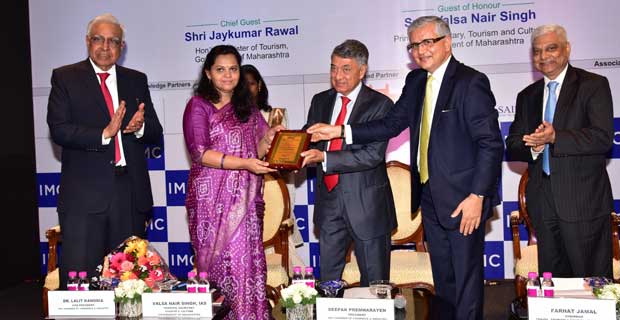Sponsored Listings:
IMC to establish a task force for state government to draft Medical Tourism Policy
Growing at 20-25% per annum, the Medical Tourism industry in India is one of the fastest growing healthcare markets across the globe and has caught the attention of several healthcare and hospitality providers. Medical tourists from Asia, GCC, Africa and the SAARC regions are increasingly opting for India as the preferred destination for advances medical treatments and services.
“Maharashtra aims to become the No. 1 destination for Medical Tourism through state-of-the-art healthcare facilities, well-trained medical professionals and low cost of delivery as compared to cities like Tamil Nadu and Delhi,” said Valsa Nair, Principal Secretary- Tourism and Culture, Government of Maharashtra at her address at the Medical Tourism Conclave, organised by the IMC Chamber of Commerce & Industry in Mumbai.
Speaking at the conclave, she said, “Medical Tourism in India is seen as the next crown jewel that could shape the future of India’s economy and health care. The Indian Medical Tourism industry is expected to grow from current $ 3 million to $ 8 billion attracting medical tourists from Bangladesh, Iraq, GCC, CIS region and Africa. Our objective is to provide infrastructure, hospitals and medical facilities in Pune, Nagpur and other centers around the state.”
Maharashtra is planning to create a single web platform which will provide plethora of services and facilities to the global patients seeking assistance in India. With 100% FDI in medical and devices sector, it will further give a boost to the ‘Make in India’ initiative.
As a Medical Tourism destination, India is known for high-class treatment at affordable costs. The country’s cost benefit gives it a definite edge over other countries like Singapore and Malaysia. Medical treatment in India enables savings of 30-70% on total expenditure.
Deepak Premnarayen, President, IMC, said, “Apart from the Medical Tourism Council, the IMC Chamber of Commerce & Industry is also looking into creating a task force which will put together its suggestions for drafting the necessary and appropriate policies for the promotion of Medical Tourism in the state. While there are several challenges such as adequate insurance, complaint resolution mechanism, safety regulations, norms governing malpractices etc; the state also presents several opportunities which the government can extend its support to. We will also evaluate more engagement and associations with partner countries to provide a fillip to this growing industry.”
Leading doctors like Dr S Natarajan, CMD, Aditya Jyot Eye Hospital; Dr Darius Soonawala, Orthopedic & Joint Replacement Surgeon, Jaslok Hospital; Dr Vinay Jacob, Cosmetologist, Bombay Hospital; and Dr Sumit Pal, Cardiovascular Thoracic Surgeon, Apollo Hospital; Rajiv Duggal, CEO, Lavassa Hospitality; Devendra Bharma, EVP, Oberoi Hotels; Dr Hidayat Khan, CMD, Human Care Air Ambulance; and Dr Parag Rindani, AVP & Head, Wockhardt Hospital participated in the panel discussions during the conference.
India currently garners no more than a minuscule percentage of the world medical tourists contributing to less than 0.1% of the nation’s GDP. With a concerted effort India can target a GDP share of 2% from medical tourism. However, lack of unified pricing, visa policies and the tussle between public and private hospitals present a challenge which needs to be addressed.
Source: travelnewsdigest.in










